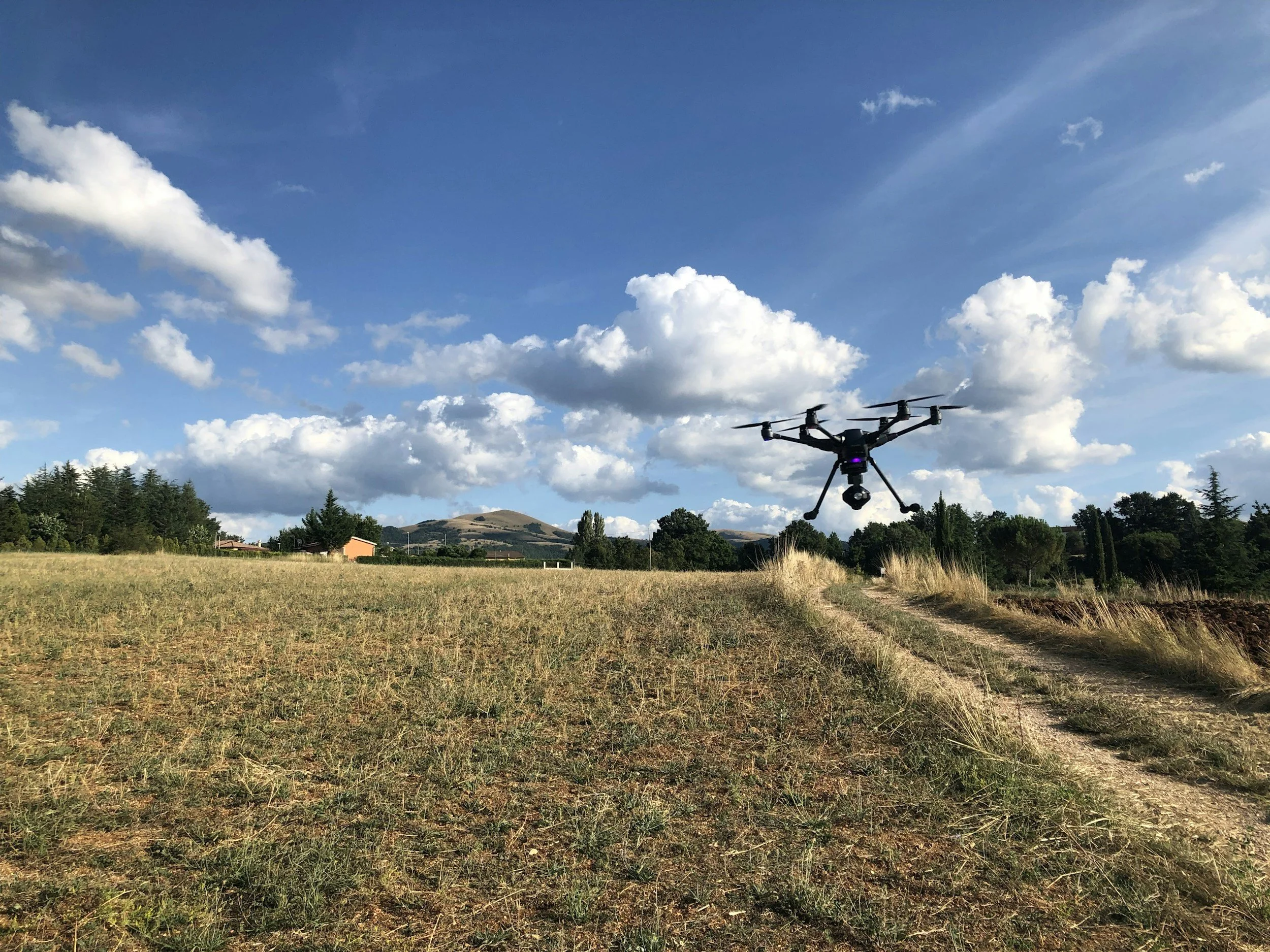Eco-Friendly Innovations: How Warehouse Barriers Contribute to Sustainable Operations
/At a time when sustainability has become the linchpin of innovative practices, warehouse barriers have, in their own right, emerged as a major component in steering operations towards eco-friendly practices. The integration of these barriers plays a big role in mitigating environmental impacts. In this article, we’ll look into the numerous ways in which barriers branch out of their conventional roles, becoming instrumental in fostering a sustainable and environmentally responsible warehousing ecosystem.
By exploring various innovative approaches and technologies, we’ll unravel how these seemingly simple structures can be harnessed to pave the way for greener, more efficient, and ultimately, future-proof operations within the warehousing sector.
Enhancing Safety and Reducing Environmental Impact
For navigating the complex network of warehouse operations, the deployment of barriers not only strengthens safety measures in the workplace, but also creates a pathway towards sustainability. Here are some of the ways that warehouse barriers can work to accomplish these objectives.
Strategic Barrier Placement in Hazardous Zones
Certain zones inherently pose more risks than others, especially those categorised as ‘other hazardous workplace environments.’ These may include areas where heavy machinery operates, zones prone to spillages of potentially harmful materials, or sections where high-stacked items are stored. Strategic placement of barriers in these zones is vital, not only to safeguard personnel from potential accidents but also to prevent any environmental mishaps that could happen from uncontrolled spills or collisions. Employing barriers made from sustainable materials or those designed for reuse can further enhance the eco-friendly aspect, ensuring that safety does not come at an environmental cost.
Implementing Eco-Friendly Barrier Materials
The choice of materials used in barrier construction is necessary in reducing the environmental impact of warehouse operations. Opting for barriers made from recycled, recyclable, or sustainably sourced materials ensures that the implementation of these safety structures does not inadvertently contribute to degrading environments. Furthermore, considering materials that have a low manufacturing carbon footprint, such as certain plastics or sustainably harvested wood, can further align safety protocols with environmental conservation efforts.
Minimising Energy Consumption with Barrier Design
The design and placement of barriers can also have a tangible impact on a warehouse’s energy consumption. For instance, utilising barriers to create more efficient workflow paths can minimise the distance covered by personnel and machinery – thereby reducing energy usage. Additionally, in temperature-controlled areas, barriers can be used to minimise the escape of cooled or heated air, ensuring that HVAC systems do not have to work overtime to maintain the right conditions and as a result, conserving energy.
Barrier Maintenance and Lifecycle Management
Ensuring that barriers remain effective and environmentally friendly throughout their lifecycle involves regular maintenance and eventual recycling or repurposing. Implementing a good maintenance schedule ensures that barriers retain their structural integrity and continue to provide optimal safety. Once a barrier reaches the end of its useful life, considering its next lifecycle phase is crucial. This may involve recycling the materials, repurposing the barrier for alternative use, or disassembling it in a manner that allows for the majority of its components to be reused, thereby ensuring that waste is minimised.
In essence, the role of barriers in enhancing safety and sustainability within the warehouse environment is multifaceted and extends far beyond mere segregation of spaces. By strategically selecting, placing, and managing barriers, warehouses can significantly enhance safety in hazardous zones, minimise their environmental impact, and pave the way towards more sustainable operations, ensuring that they are well-equipped to navigate the demands of the modern logistical landscape.
Optimising Energy Usage through Smart Barriers
In the warehousing world, where energy management is essential, smart barriers have emerged as a revolutionary tool in optimising energy usage whilst maintaining operational efficiency. These barriers, embedded with sensors, connectivity, and automated controls, facilitate a dynamic and responsive warehouse environment, adapting to various operational needs and thereby ensuring energy is used in the most efficient manner possible.
Adaptive Environmental Control
One of the most salient features of smart barriers is their ability to adapt to and control the warehouse environment. In spaces where temperature and humidity control is crucial, smart barriers can automatically adjust their positions to maintain optimal conditions, ensuring that energy is not squandered in overcooling or overheating. This not only safeguards the integrity of stored goods but also significantly reduces energy expenditure, contributing to a more sustainable operational model.
Intelligent Traffic Management
In bustling warehouse environments, the intelligent management of vehicular and pedestrian traffic is vital to prevent collisions and ensure smooth operations. Smart barriers, with their integrated sensors and connectivity, can dynamically manage traffic flow, adjusting barrier positions in real-time to redirect vehicles and personnel as needed. This not only enhances safety but also optimises the routes taken within the warehouse, potentially reducing travel times and associated energy usage of vehicular equipment.
Automated Space Optimisation
Space utilisation is another critical aspect where smart barriers can significantly impact energy usage. By automatically adjusting layouts in response to real-time storage and retrieval activities, smart barriers ensure that space is utilised in the most efficient manner. This not only minimises the need for excessive travel within the warehouse but also ensures that lighting and HVAC systems are utilised optimally, thereby reducing unnecessary energy consumption.
Mitigating Waste and Facilitating Recycling
Barriers can also play a big role in waste management and recycling initiatives within a warehouse. By creating designated zones for waste collection and recycling, barriers ensure that materials are systematically sorted and processed. This not only aids in reducing landfill contributions but also facilitates the reuse and recycling of materials, further embedding sustainability into the warehouse’s operational framework.
Adapting to Sustainable Material Handling
In other hazardous workplace environments, where the handling of materials can pose significant risks, barriers serve as a first line of defence, preventing unauthorised access and ensuring safety protocols are adhered to. Furthermore, by integrating barriers into automated material handling systems, warehouses can minimise manual handling, reducing the potential for accidents and enhancing overall operational efficiency.
Paving the Way for Sustainable Warehousing
While simple in their role, barriers play an important part in creating a sustainable, safe, and efficient warehouse environment. From enhancing safety in potentially hazardous zones to optimising energy usage and facilitating effective waste management, barriers have proven to be more than mere physical dividers. As we move towards an increasingly eco-conscious future, the role of barriers in warehousing is set to evolve, intertwining operational excellence with a steadfast commitment to sustainability.
FAQs
We've summarised some of the most frequently asked questions regarding warehouse barriers and sustainability, which we hope will answer any further queries:
What are smart barriers and how do they optimise energy usage in warehouses?
Smart barriers are equipped with sensors, connectivity, and automated controls, enabling them to adapt dynamically to various operational needs within a warehouse. They optimise energy usage by automatically adjusting positions to maintain optimal environmental conditions, managing traffic flow intelligently to reduce vehicular energy consumption, and ensuring efficient space utilisation to minimise unnecessary energy expenditure on lighting and HVAC systems.
In what ways do warehouse barriers facilitate waste management and recycling?
Warehouse barriers can be utilised to create designated zones for waste collection and recycling, ensuring that materials are systematically sorted and processed. This aids in reducing landfill contributions and facilitates the reuse and recycling of materials, embedding sustainability into the warehouse’s operational framework.
Can warehouse barriers be integrated with other technological solutions?
Yes, warehouse barriers can be integrated with other technological solutions, such as automated material handling systems and smart technology, to enhance operational efficiency. For instance, smart barriers can work in conjunction with warehouse management systems to manage space and traffic flow, while barriers can also be integrated into automated material handling systems to minimise manual handling and improve safety.
About the Author:
Ruby Clarke is a passionate writer dedicated to lighting the path towards a sustainable future. Her writing typically explores the nuances of the green economy and renewable energy, with the goal of inspiring and educating through insightful articles and analyses. She’s happy that you can be a part of this journey!







































